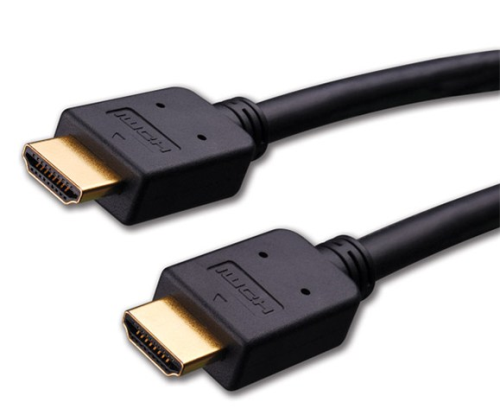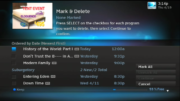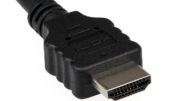Don’t fall for those overpriced monstrosities. This is our Installer Series HDMI cable. It gives you everything you’ll need for today’s HDTV installations, and it actually supports all the advanced features of the HDMI 1.4 specification. Yet, it’s very inexpensive. You can go to your local store and easily pay 10 times the price for a similar one.
But do you need to?
You may have grown up in the age of expensive audio and video cables, those gold-plated, super-thick cables that connected your VCR to your super-cool 32″ tube TV. Back then, good cables were critical. Analog signals like the ones from your VCR are very sensitive to interference from outside sources, and they require well-constructed cables to work well. Signal loss is also a great consideration when you’re running long cables, and those thick meaty ones do make a difference there.
Flash forward 15 years and the game has changed. HDMI is a digital standard, and as long as the cables meet reasonable minimum standards for quality, the signal won’t travel any differently. It doesn’t matter if it’s a $10 cable or a $100 cable in most cases. That fancy thick cable with the meaty molded connectors won’t give you a picture that’s any better.
True, there are some cases when you’ll need a better quality of cable. HDMI tends to do poorly in runs over 50 feet (15m). As you get close to that limit, a thicker cable might help you there. In-wall installations can also benefit from extra insulation from the elements and if they are run in parallel with plastic-sheathed wire (like Romex®) you might want to use a more insulated cable to avoid RF interference. A cable that’s going to be connected and disconnected frequently might need a beefier connector, but if the goal is to connect your DVR to your TV and just leave it there… don’t bother with the fancy stuff.
In the early days of HDTV it was hard to find HDMI cables for under $50, because unscrupulous retailers took advantage of the public’s lack of knowledge, but today it’s common to find low-priced cables anywhere. So, don’t get sucked in by a salesperson or even a friend who recommends cables with fancy brand names and big promises. Look for these basics and you can’t go wrong:
- HDMI 1.4 – your satellite box doesn’t need it but other components might.
- Supports HDMI-ARC and Ethernet over HDMI – again not mandatory for satellite but even the least expensive cables should do this anyway.
If you see those specifications, and the cable itself looks cleanly made (as opposed to dollar-store versions,) you know you can buy safely and enjoy the cable for years to come.





